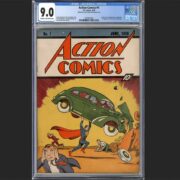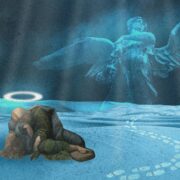Prevent the rash: Shingles in PH

What is shingles?” This is a question that Filipinos should be asking more—but aren’t. This is both because of a lack of public awareness and a stigma attached to the scientific name of the condition, the “herpes” in herpes zoster.
Most people hear herpes, they think of the sexually transmitted infection (STI) classified genital herpes, caused by the herpes simplex virus type 1. Yet like shingles, herpes is part of the name of the virus herpes simplex type 2, oral herpes, which causes cold sores, the blister colloquially known as singaw.
But unlike singaw, which is relatively harmless, shingles poses dangerous long-term effects if left untreated, which may happen if left undiagnosed.
“It is not infectious,” clarified infectious disease specialist Dr. Rontgene M. Solante, “but it is a common, painful and potentially debilitating illness.” Dr. Solante was the main speaker at “’Sabi Nila’: The Truth About Shingles,” GlaxoSmithKline’s (GSK) launch of its shingles awareness campaign, last March 12 at SM Aura Premier.
It initially appears as a rash, but it’s not just a rash.
Shingles actually is the “grown-up” and far more problematic version of a common childhood disease, chicken pox, caused by the varicella zoster virus. The very infectious chicken pox usually presents as rashes that become itchy blisters all over the back, chest and face that will eventually become scabs. It is accompanied by fever, headaches and fatigues. Chicken pox lasts an average of four to seven days.
But even after a patient recovers from chicken pox, the varicella virus remains in the body, lying dormant until it is reactivated later in life. When it is reactivated, it becomes shingles.
“It hides in our central nervous system, and comes back when our immunity is weakened, such as when we get older,” said Dr. Solante.
Doctors treat shingles with painkillers for the pain and antivirals for the virus.
Vast majority
Dr. Solante said one can get shingles at any age, but the vast majority (one out of three people worldwide) are at risk once they reach their 50s. “It goes up exponentially.”
In the Philippines, the highest incidence of shingles occurs in ages 50-59, or 2,266,593 out of a population of 9,371,157, a whopping 24 percent.
There are factors that can increase one’s risks of developing shingles: chronic respiratory diseases such as diabetes; COPD or asthma; chronic renal disease; COVID-19; HIV/AIDS; autoimmune diseases; and steroid use.
Even after the rashes go away, some get subacute herpetic neuralgia (up to three months) which is distinguished by a tingling that turns into pain so intense, some patients cannot sleep. Some get depression because of how it affects their lives.
The worst-case scenario come even after that. This is the dreaded post-herpetic neuralgia (PHN) which can last months and even years. This is greater pain that can only be mitigated by painkillers. This affects 30 percent of shingles patients. “There is no good treatment for PHN,” said Dr. Solante.
He also identified another condition that could be developed by shingles sufferers: herpes zoster ophthalmicus, which affects up to 25 percent of shingles patients and in rare cases can lead to vision loss.
There are even others, such as disseminated disease (which can lead to a brain condition such as encephalitis); neurological complications; Ramsay’s Hunt syndrome (which can lead to hearing loss); Bell’s palsy—and Dr. Solante said shingles has even been linked to cardiovascular events such as strokes.
This is why he emphasized that “there is an urgent need for an urgent intervention that prevents shingles and PHN especially for the vulnerable population.”
Host Issa Litton noted the importance of going to health professionals when you suspect you might have shingles or see unusual rashes instead of going on the internet and Googling it. “That’s so wrong, let’s break those bad habits,” she said.
Broadcast journalist Karen Davila has suffered through shingles twice. “The first time I got it, I was in my 40s and I didn’t know what it was. My life was very hectic. And the rash first appeared on my forehead. It was very painful. It was scary because it was like an electrifying headache. So, I went to a dermatologist, who said it was shingles.”
Ten years after, she was on a trip and she saw rashes on her stomach, which she thought was some kind of allergic reaction. She sent a photo to her dermatologist, who told her that it was shingles, again.
“It was after that that I got really alarmed. When I’ve had it twice, I felt scared, depressed and honestly ashamed. I would not want anyone to go through that,” said Davila.
Nette Garcia is freelance marketing practitioner who has had it a shocking four times. “I’ve always been healthy,” she said. “I was 36 when I first got it. In the middle of the night, my leg started getting painful, like there was a blade inside. It became more frequent and got worse. My dermatologist saw four small dots behind my knee. The second time, when I turned 50, it was my left breast that hurt, like a hot knife cutting through it. The pain was the same but the rashes was very mild. Anyone can get shingles, so if you can avoid it, you should.”
She got it again the next year, and a fourth time the next year. But when she turned 52, there were no more rashes, it was now PHN.
Both women highly emphasized the value of consulting with one’s doctor.
Focus on prevention
Since shingles can be difficult to treat and is potentially dangerous, the focus should be on prevention. Dr. Solante noted there are now vaccines available for shingles.
“We are happy that we have these vaccines now because we can help people not suffer from it,” he said. He also noted that “stress is one powerful factor for the reactivation of varicella even if you are not yet 50 years old.” So, a healthy, less stressful lifestyle where one gets the right amount of sleep will help by boosting your immune system.
Dermatologist Dr. Gaile Robredo-Vitas often sees shingles patients before the patients even know they have it. “A lot of my patients come to me because of the rashes, but during the interview, we discover that they had pain before the rashes appeared. It is the same pain Nette and Karen described, a fiery pain with seemingly water-filled rashes. That’s why one of the descriptions for shingles is ‘dewdrops on a rose petal,’ because it is like drops of water on a red background. One thing about shingles is that the rashes only appear on one side of the body, either the left side or just the right side. The rashes do not cross the spine, a very unique characteristic of shingles.”
Dr. Robredo-Vitas says people often mistake shingles for something else, like an allergic reaction or irritation. She also said people need to get the right information. “We get patients from the provinces that think that shingles is because nakulam sila (they were cursed) or they call it sawa (python) because it goes around the body.” With more information available, they can be disabused of such ideas and get treated properly.
“Now, I want to share my story,” Davila said. “I don’t think Filipinos know how dangerous shingles is.” That’s why she is working on an information awareness packet for people to understand what it is. While it’s everyone’s prerogative, Davila said she has gotten vaccinated.
GSK communications and government affairs head Richard Arboleda says the company is getting behind this cause. “By providing accessible, accurate info, our aim is to empower individuals to recognize the signs of shingles and seek medical help and see the impact it can have on their lives.” The company already has a website (whatisshingles.ph) up and running. “This platform serves as a comprehensive resource providing vital information about shingles, its symptoms, available prevent and treatment options,” said Arboleda. GSK is working with Davila on the information packet, bannered by a vlog she will be producing for her YouTube channel to chronicle shingles stories like hers and Garcia’s.
GSK has also launched an information video that it is now running on various social media platforms and TV.
Dr. Solante concluded with this call to action: “Prevent shingles. That is so important. This is our powerful tool. Instead of waiting and not informing everyone, we can prevent it.” INQ

















